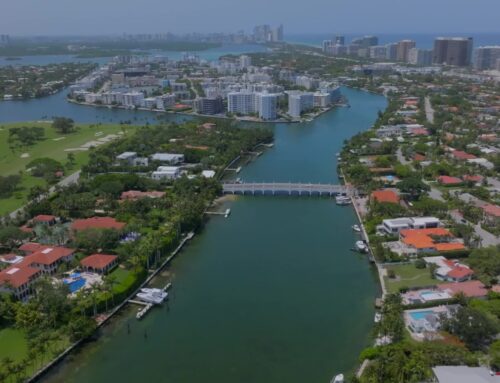Developing Economies Cannot Afford a Fossil-Free Future Yet
June 13, 2025
While the world pushes for clean energy, developing economies still rely on fossil fuels, and without major financing, the transition will remain unequal and out of reach.
According to Greenpeace, one of the world’s leading environmental organizations, “To avoid the worst impacts of climate change, we need to keep the majority of the world’s remaining fossil fuels in the ground. It’s time to phase out coal, oil, and natural gas—and instead, invest in workers, communities, and a renewable energy future.”
Most nations agree with this sentiment: climate change needs to be tackled, and an energy transition from fossil fuels to renewables is important to that process. Part of the discussion over climate change and energy transition is that, for the global good, lower- and middle-income countries or developing economies should be discouraged from harvesting their fossil fuel resources and held to global climate targets. But how do developing economies finance the Greenpeace goal of phasing out coal, oil, and natural gas while at the same time investing in workers, communities, and a renewable energy future? For some in lower- and middle-income economies with large fossil fuel resources still in the ground, the message is—stay poor but virtuous and forego the opportunity to improve national infrastructure, upgrade human capital, and have the capacity to pay for the energy transition.
Fossil Fuels Still Dominate in the Developing World
Fossil fuels still dominate in much of Africa, Asia, and the Middle East. According to the International Energy Agency, coal accounts for 61 percent of the energy supply in China and 69 percent in Indonesia. In India, it accounts for 74 percent of total power generation. For many other developing economies, oil and gas remain the primary source of energy. The exception to this is in Latin America, which has an abundance of hydro, wind, and solar power, helped along by government policies to promote renewable energy. In Latin America, renewable energy accounts for 64 percent of electricity generated—which is significantly higher than the global average of 30 percent—due to an abundance of hydropower.
China looms large in the debate over tapping into fossil fuel resources. The Asian country is the world’s largest emitter of greenhouse gases, accounting for around 30 percent of global emissions, reflecting a voracious use of coal, oil, and natural gas. The environmental costs of decades of rapid growth, based on heavy industrialization and tapping natural resources such as coal and rare earth metals, have left behind a toxic landscape in parts of the country.
China continues to add carbon. The world’s leading coal producer, China, saw its coal power construction hit a 10-year peak in 2024, with the approval of 66.7 GW of new coal-fired power capacity. At the same time, China is a major importer of oil and natural gas, encouraging other countries to develop their resources. Moreover, the ongoing need for energy has led Chinese companies to actively search for oil globally, including in the geopolitically fraught South China Sea, as well as aggressively seek critical metals necessary for augmenting electric power.
China’s Dual Role in the Energy Transition
But what would have happened if China had not tapped its fossil fuel resources? Would it have been able to transform the Chinese economy from a relatively backward, inward-looking, and lower-income economy in the 1970s into the world’s second-largest economy with middle-income status, pulling millions out of extreme poverty? It is doubtful that China would have achieved the same levels of rapid economic expansion and poverty alleviation. Equally important, without its heavy use of fossil fuels, will China have enough electricity to power the next leg of China’s development, the shift into an electric-powered and green technology-driven economy?
China is now the world’s largest investor in energy, especially renewables. According to BloombergNEF, in 2024, the Asian country accounted for two-thirds of the energy transition investment, totaling $2.1 trillion spent globally. China is the world’s leader in lithium-ion batteries, holding 60 percent of global market share; it is home to the world’s largest green hydrogen project, with close to 40 percent of the planet’s hydrogen refueling stations; and it produces more than 60 percent of the world’s electric cars. It also dominates wind and solar manufacturing. For China, fossil fuels have provided the energy needed to make the transition to cleaner energy sources, albeit using dirty means.
China is not the only lower- and middle-income country wrestling over whether to tap fossil fuels at a time when climate change is considered one of the direst risks facing the planet. In Africa, countries like Senegal, Mauritania, and Tanzania are developing natural gas fields to sell to Europe, which is helping finance these projects to offset the loss of Russian oil and gas.
Guyana’s Energy Boom
One of the countries that has come most sharply into focus on whether developing economies should be dissuaded from developing their fossil fuel resources is Guyana, a country of around 800,000 located on the northeastern shoulder of South America. Long one of the poorest countries in the Western Hemisphere, the country’s fortunes changed in 2015, when ExxonMobil discovered significant oil reserves offshore. The subsequent development of oil propelled Guyana into the ranks of high-income economies and helped generate one of the world’s fastest-growing economies, with real GDP hitting 33.8 percent in 2023 and 43.6 percent in 2024, with 10.3 percent forecast for 2025.
In April 2024, BBC’s HARDtalk host, Stephen Sacker, and Guyana’s President Irfaan Ali discussed the South American country’s decision to tap its fossil fuel resources. Sacker stated:
Over the next decade or two, it’s expected that there will be $150 billion worth of oil and gas extracted off your coast. It’s an extraordinary figure. But think of it in practical terms—according to many experts—two billion tons of carbon emissions will come from your seabed from those reserves and [be] released into the atmosphere.
President Ali responded to Sacker by underscoring the hypocrisy of Western countries in condescendingly lecturing developing economies, especially after advanced economies already had their industrial revolutions and had done much to destroy the world’s biodiversity. While Guyana’s tapping of its oil sector clearly represents challenges to both the environment and governance, the emerging petro-state has preserved one of the world’s largest carbon sinks, as 85 percent of its territory remains forested. Guyana has also maintained its biodiversity, while globally there has been an average drop of 68 percent in mammal, bird, fish, reptile, and amphibian populations since 1970.
Financing is the Missing Piece
As for Greenpeace’s statement about fossil fuels remaining in the ground, Ali wanted to know who was going to pay for Guyana to maintain its forests and build needed sea defenses and irrigation systems to deal with climate change. He indicated that, for all the words about combating climate change, most advanced economies are not offering up the necessary financing. Ali’s final point reflects the view of several lower- and middle-income countries in that oil and natural gas are seen as “an important tool in the transformation of our society in the building of a prosperous Guyana and a sustainable Guyana. For us, this stream of revenue offers us the opportunity to diversify our economy and to create a country to fulfill all of its potential.”
The Ali-Sacker exchange underscored that if developing economies want to upgrade their economies, they need energy and lots of it. Consequently, energy security has become more important and, with climate change, more complicated. Directly related to this is the financing issue. Many developing countries are heavily indebted and cannot afford to make the shift from oil to less-polluting natural gas or make a broader commitment to solar and wind. Lacking access to global capital markets, they simply do not have the money. In 2023, Mia Mottley, the prime minister of Barbados, advanced what was to become known as the Bridgetown Initiative. It called for overhauling the global financial architecture needed to help countries facing debt distress and liquidity problems, in particular 52 heavily indebted low- and middle-income developing economies, accounting for more than 40 percent of the world’s poorest people.
A Divide Between Survival and Transition
Long-time energy expert Daniel Yergin has noted that the global energy transition and the push toward net-zero carbon emissions will be disruptive processes. In particular, he indicated that energy security has returned as a prime requirement for countries, that there is a lack of consensus on how fast the transition should and can take, and that there is a sharpening divide between advanced and developing economies in the transition. These factors play a large role in how developing economies approach whether to keep their fossil fuels in the ground. Moreover, they point to a divide within the developing world between countries like China, Guyana, and Senegal, which are developing oil and gas resources but also making efforts toward renewables, and countries, such as many island states in the Caribbean, Indian Ocean, and South Pacific, that face total submersion. China has targeted peak carbon emissions by 2030 and is to become carbon neutral by the 2060s; Kiribati, Tuvalu, and most of the Maldives could be underwater by then.
The Path Forward Requires More Than Good Intentions
Climate change is likely to deteriorate further, as the ability to manage a global strategy is like herding cats, especially when countries like the United States opt out of the program, China continues to pull coal and oil out of the ground, and Europe seeks to help African countries develop their gas fields. Greenpeace’s assessment that most of the world’s remaining fossil fuels should remain in the ground is correct, but the realities on the ground—energy transition financing, energy security, and differing timeframes—greatly complicate the process. If real progress is going to be made, much greater political will and financing are needed; if not, the field is left open to those who, for a number of different reasons, are driven by “drill baby, drill!”
To Read the Pro Side of This Debate, Go Here.
About the Author: Scott B. MacDonald
Dr. Scott B. MacDonald is Chief Economist at Smith’s Research & Gradings and a Fellow at the Caribbean Policy Consortium. He is also the author of The New Cold War, China, and the Caribbean (Palgrave Macmillan, 2022).
Image: Brian A Jackson/Shutterstock
Search
RECENT PRESS RELEASES
Related Post




